Review: Cane Creek says it made the world’s first gravel fork — but what is a gravel fork, and how does it ride?
Cane Creek claims its new fork covers the gravel category better than the mini MTB forks from RockShox and Fox, but at this price, we expected more.
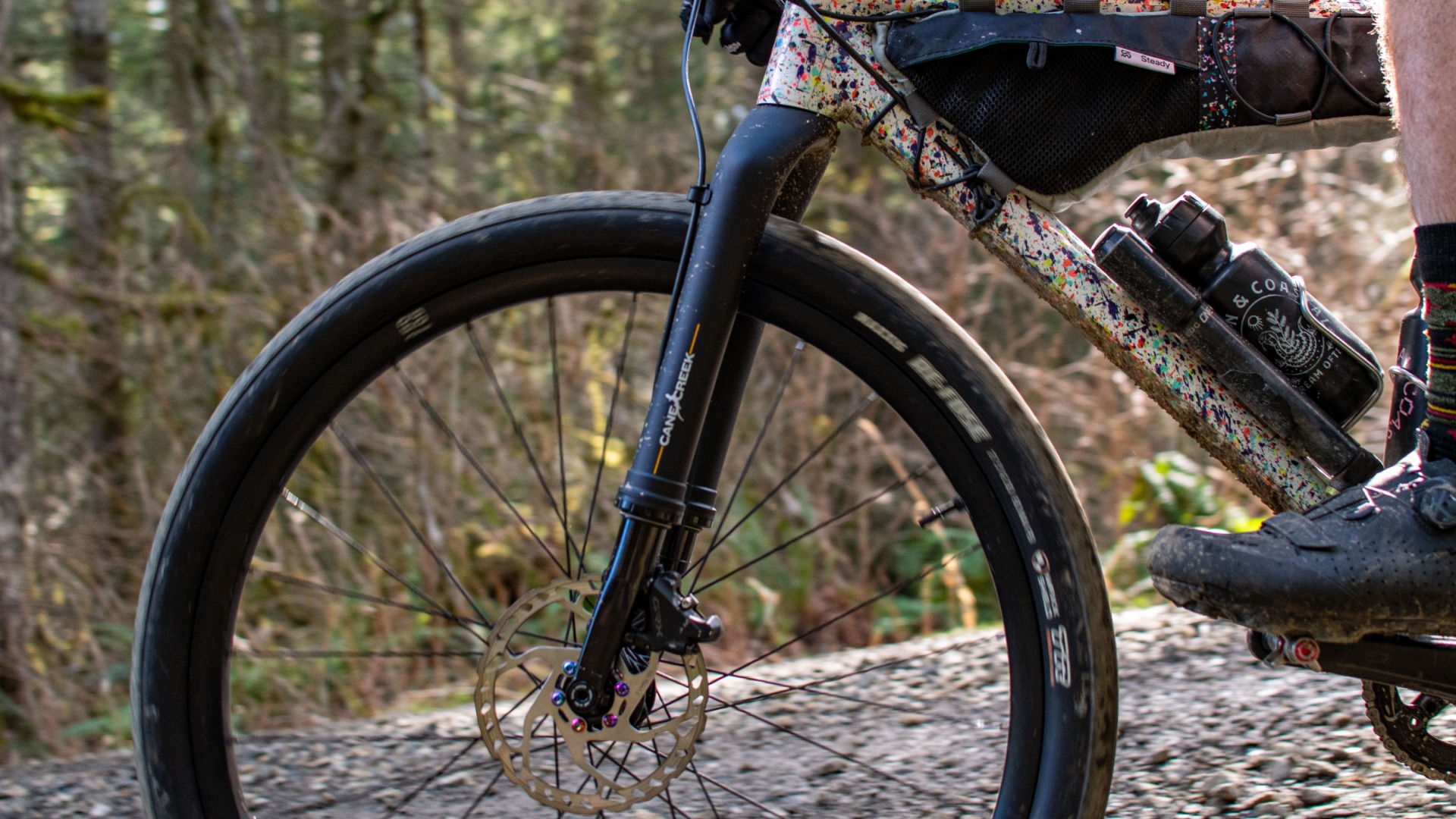
The Cane Creek Invert is a simple, albeit extravagant, upgrade to your gravel bike that will boost comfort and confidence on your gravel rides. The title of gravel fork is well-earned, but things can get unpredictable when the fork is pushed outside the realm of the current gravel trend. In typical Cane Creek fashion, the design and finish on the fork are beautiful.
-
+
Added comfort by erasing the high-frequency chatter
-
+
Extra support helps you push through rougher terrain
-
+
Head turning looks
-
+
Easy to tune
-
+
Plenty of tyre clearance
-
+
Lightweight
-
+
USA Made
-
-
Price
-
-
No fender mounts
-
-
Integrated Crown Race
-
-
Lacking cable routing
-
-
Lacking dampening
-
-
The Invert may change up your bike’s geometry, affecting handling and feel
You can trust Cycling Weekly.

Foreword:
I don’t really identify as a gravel rider. I definitely ride gravel roads, but I don’t race or take the category very seriously. I prefer riding gravel roads over paved roads because motorists are the worst, but mountain bike trails are my true calling. To me, gravel is the gateway to adventure, and a good gravel product needs to be able to handle pretty much anything I throw at it. Read on to see if Cane Creek's gravel fork can handle my riding style.
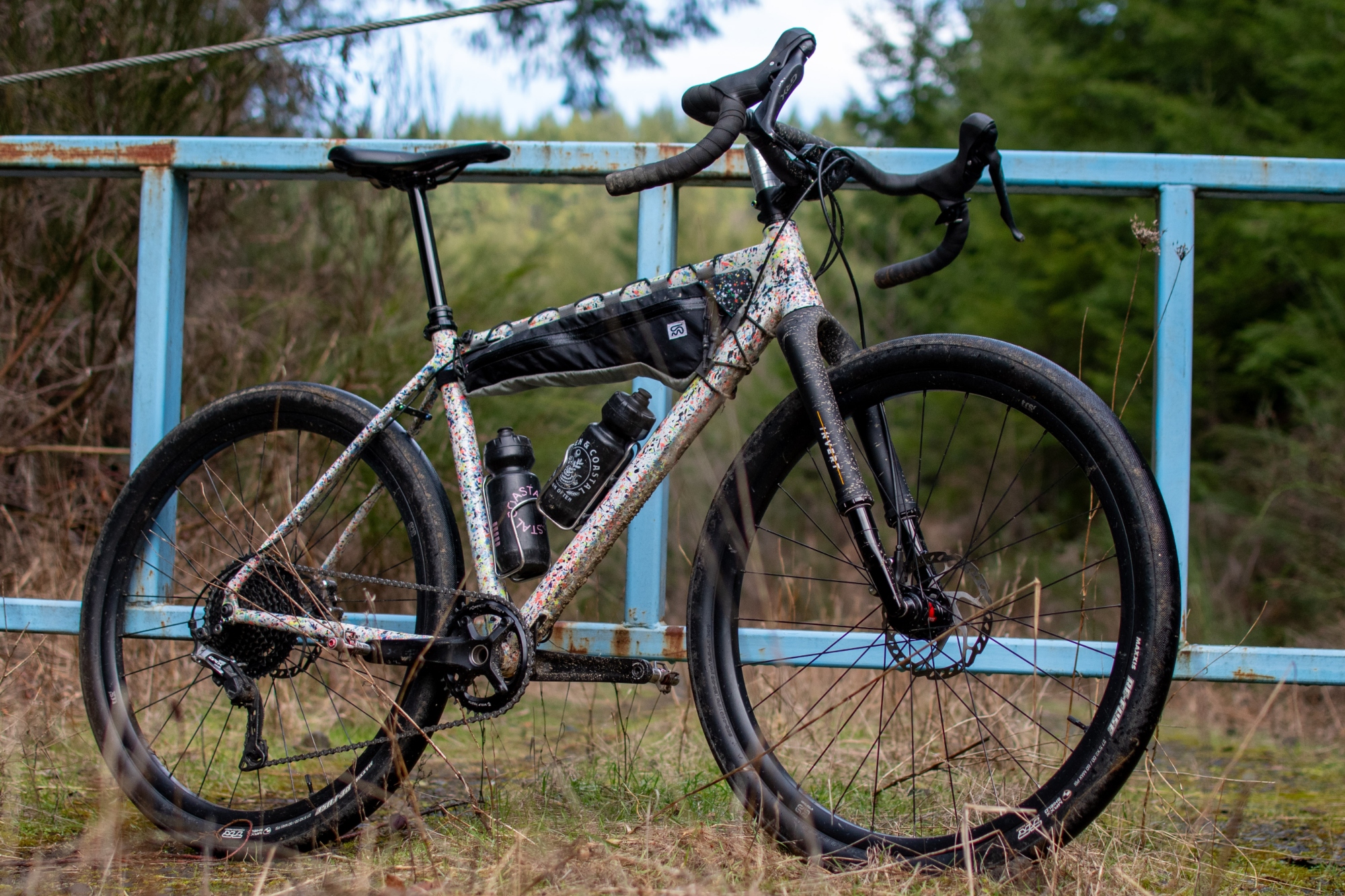
Before I got my hands on this choice piece of kit, I had a wonderful chat with Will Hart from Cane Creek to talk about the Invert. We really got into it, covering the brand's intent, the limitations, what to expect, and how best to enjoy the suspension gravel fork. After the chat, I was genuinely excited to put the Invert to the test, and I started planning my strategy on how to best put this fork through the wringer.
My plan was to first test the fork on my dedicated drop-bar rig, a Nukeproof Digger, as this bike fits the fork's intention. Then, to make things even more interesting, I wanted to give it a whirl on my flat-bar do-everything rig, the Hudski Doggler. The Doggler is a bit outside the intended gravel category, but as a modern hybrid, it is a great test bed for outlier situations where the Invert could be utilised.
Overview

What is it:
Simply put, the Invert is a suspension fork. But rather than making a smaller mountain bike fork, Cane Creek set out to design a fork explicitly made for gravel, delivering a smooth and controlled ride while complementing teh dropbar silhouette with a lightweight and visually striking design.
Inverted forks (also called upside-down forks) have been used on and off in the mountain bike world. Cane Creek says it opted for this design as it allowed for the lightest weight and most visually integrated design possible. The inverted design further reduces unsprung weight—the mass of parts like the wheel and lower fork that move with the terrain—making the suspension more responsive and improving traction. It's also said to keep seals better lubricated and cleaner, while the bridge-free design allows for better tyre clearance.
The Cane Creek Invert SL details:
- 30mm of travel
- Airsping Suspension
- Air pressure adjustable with shock pump
- Carbon fibre and aluminium construction
- Weight: 990g
- $1099,99
"Until this point, no fork made for drop bars, rigid or otherwise can offer this much rider benefit in one, clean package. This is what it means to truly be a Gravel Fork.," Cane Creek claims.
Let's dive in.
Unboxing and setup

With the Invert, Cane Creek set out to create the best-looking gravel-specific suspension fork—and that intention is clear the moment you open the box. This is a truly beautiful piece of kit. I’ll admit, I’ve got a soft spot for Cane Creek. The EEWings are some of my favourite cranks, the DBIL and Kitsuma shocks have found their way onto several of my bikes, and I regularly put their Helm Mkii fork through its paces. In short, I know the brand well and came into this review with high expectations for their take on a gravel fork.
The Invert is offered in two slightly different options. The SL, which weighs 990g, offers 30mm travel and measures 425mm axlet-to-crown. And the CS (Climb Switch), which weighs 1113, offers 40mm travel and measures 435mm ATC. Cane Creek set me up with the SL version, as the shorter travel worked better for my geometry.

The SL has a carbon fibre crown and tapered steerer tube, which are bonded to aluminium uppers to achieve a balance of weight savings and stiffness. Cane Creek has designed a crown race (36º) directly into the uppers and provides a perfectly matched IS52 bearing to help make sure you’re dialled. You can also fit the fork with ZS56 or EC44 headset, but you’ll need to check the angle of the bearing race. If you’re not able to check your headset angle, you’ll want to snag a lower headset from Cane Creek before you start assembling. The box includes a slick Ancora expansion plug and it's too bad one will never see the brilliant gold anodising once installed. The steerer is quite long, with plenty of room to accommodate a wide range of head tube sizes.
Unlike other mountain bike derivative forks, the Invert doesn’t include a damper—its suspension is handled entirely by the air spring. That kind of blew my mind. I’m used to constantly fiddling with knobs, always second-guessing whether my settings are dialled in. With the Invert, there’s none of that.
Cane Creek actually ran a blind side-by-side test, letting riders try the air spring version back-to-back with one that had a damper. The result? Most couldn’t feel enough of a difference to justify the added weight, complexity, and maintenance that a damper brings.
Of course, the air spring still needs regular servicing, but it's far simpler than bleeding dampers and replacing a bunch of seals.
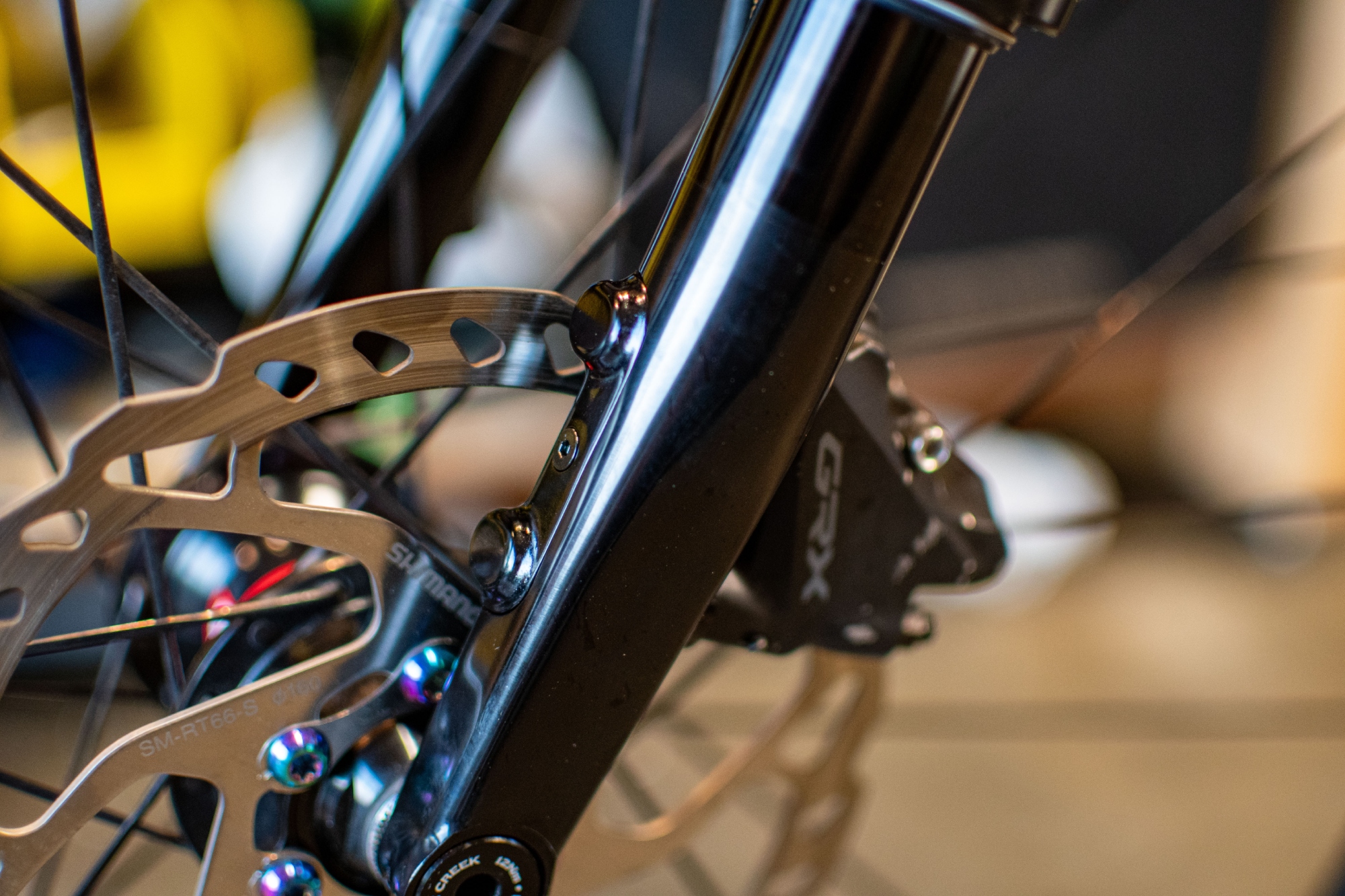
The fork has a stealthy flat mount that works with 160mm rotors, or 180 with a +20mm flat mount adaptor. Cane Creek includes hardware that fits perfectly for 160mm, but you might need additional hardware with the +20mm adaptor. There’s also a cap that covers the bolts, keeping them safe from dirt and deris, which is a nice touch,

One area where I struggled when it came to the Fox 32 and Rockshox Rudy suspension gravel fork was the lack of compatibility with 650b tyre options (-they are both marketed as 700c only). The issue is that 650b tyres tend to sit right at the height of the fork bridge, which is the narrowest point.
With the Invert, you have the same clearance the whole way up the fork. I tested the fork with 650x2” Maxxis Refuse and Ultradynamico MARS 650x2.2”, and both left plenty of clearance for mud.
While the Invert is designed around a 12x100 thru axle, I had no issues using my 15x100 hubs with a sleeve. There is plenty of room around the axle for the larger flanges.
Benefits

Here are the benefits of the Cane Creek Invert suspension gravel fork:
Comfort: This thing adds some serious forgiveness to your regular riding. It erases all the chatter and leaves you with less arm fatigue. Plus, it accomplishes this without compromising your hand and body positioning.
Confidence: In the moment when you’re too late in spotting an obstacle, and manoeuvring away is no longer possible, your only hope is to grab on tight and hope for the best. This is when the Invert has your back. It will save you from that shock, and, hopefully, offer some cushion for your equipment as well.
Looks: The Invert is a real head-turner. It has visual power, and the finish is stellar.
Easily adjustable: I love the air spring's tunability. You can adjust it based on the rider's weight and the conditions and terrain you’re riding by simply adding or removing some PSIs.
Climb Switch: While I am on the SL version, the Climb Switch feature on the CS version allows one to lock out the fork to make it rigid. This sounds like the perfect option for folks who like to get out of the saddle to climb or sprint. The switch is close to the bars and easy to engage.
Limitation
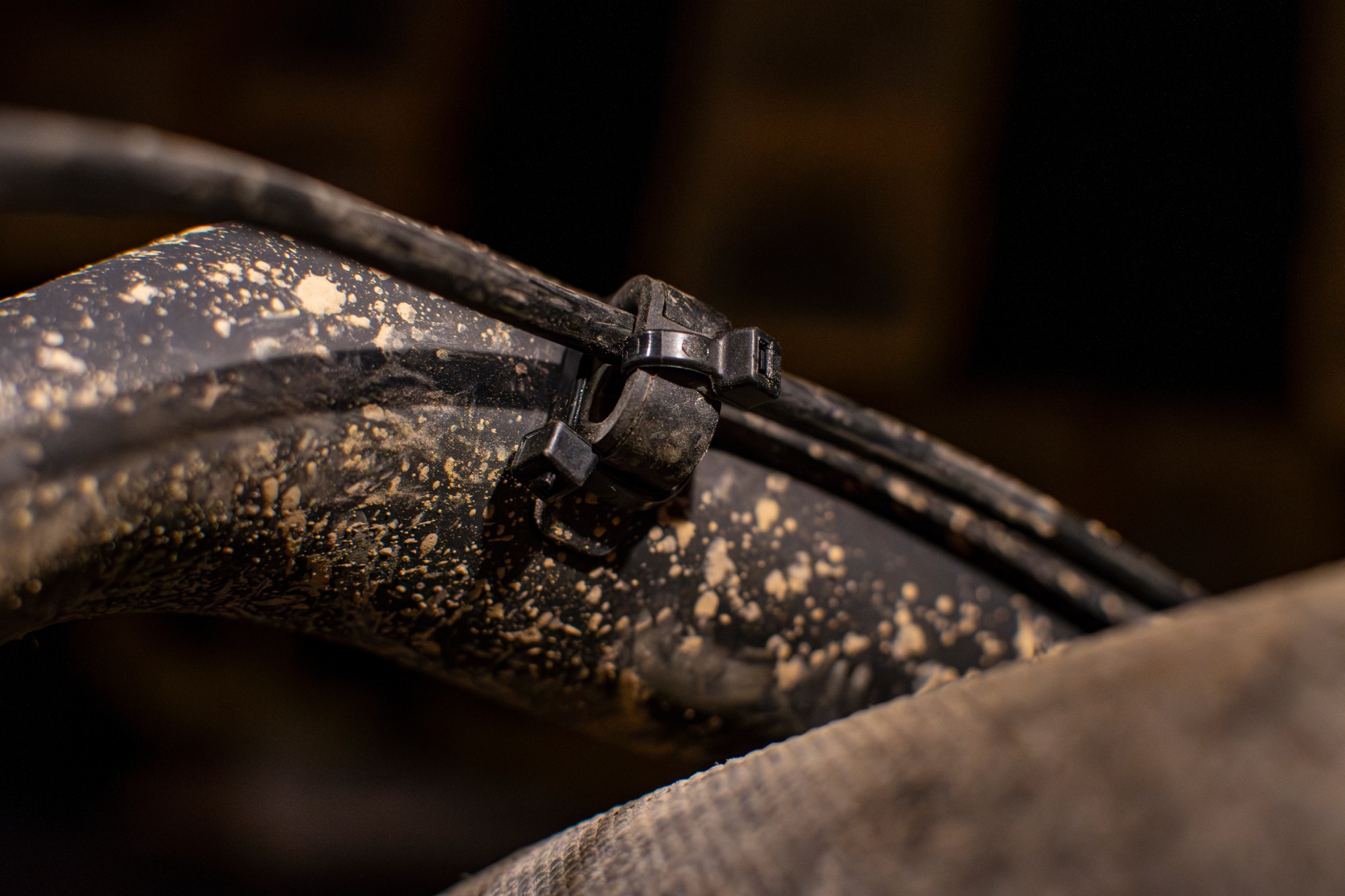
While the Invert offers some enticing benefits, there are some limitations:
Cable/Hose Routing: The Inverted layout has some inherent limitations, with cable routing being my biggest gripe. Cane Creek has included some clever mounting bits, but more refinement is needed.
The current solution consists of a removable brake hose sleeve that holds the hose in place inside the fork's hose guide by friction only. But as you make use of the full 30mm of travel, the brake hose also moves that same distance. Over time, that hose sleeve tends to work its way loose. Once it works its way all the way out, your hose might start rubbing on your tyre. Rubbing alone wouldn't be so bad, but worst case scenario, it could get hung up on some side knobs, which could result in a torn hose or a crash. Both are less than ideal scenarios on gravel rides deep in the middle of nowhere. When this happened to me, I was able to remedy the situation with some zip ties.
Fortunately, Cane Creek is aware of this issue and they're working on a fix, stating:
We've definitely seen this before on several occasions, but right now it doesn't seem to be happening with enough frequency to be a massive concern. Our pro test riders have logged hundreds of hours and haven't reported this, but I have personally seen it once or twice. It seems to have something to do with brake hose length and the relative taughtness/orientation of the cable. Perhaps you just got unlucky with the way the brake hose lays in the guide on your particular bike. I'm glad you found a way to remedy it for yourself, but we really don't want riders to have to take these extra steps and our goal is absolutely that this rubber insert piece should be able to function 100% on its own.
Anyhow, we're always taking feedback and incorporating updates into our products. We'll keep a close eye on this and if a large number of riders keep reporting the same thing, we'll move on it quickly! I appreciate your feedback.
- Will Hart from Cane Creek
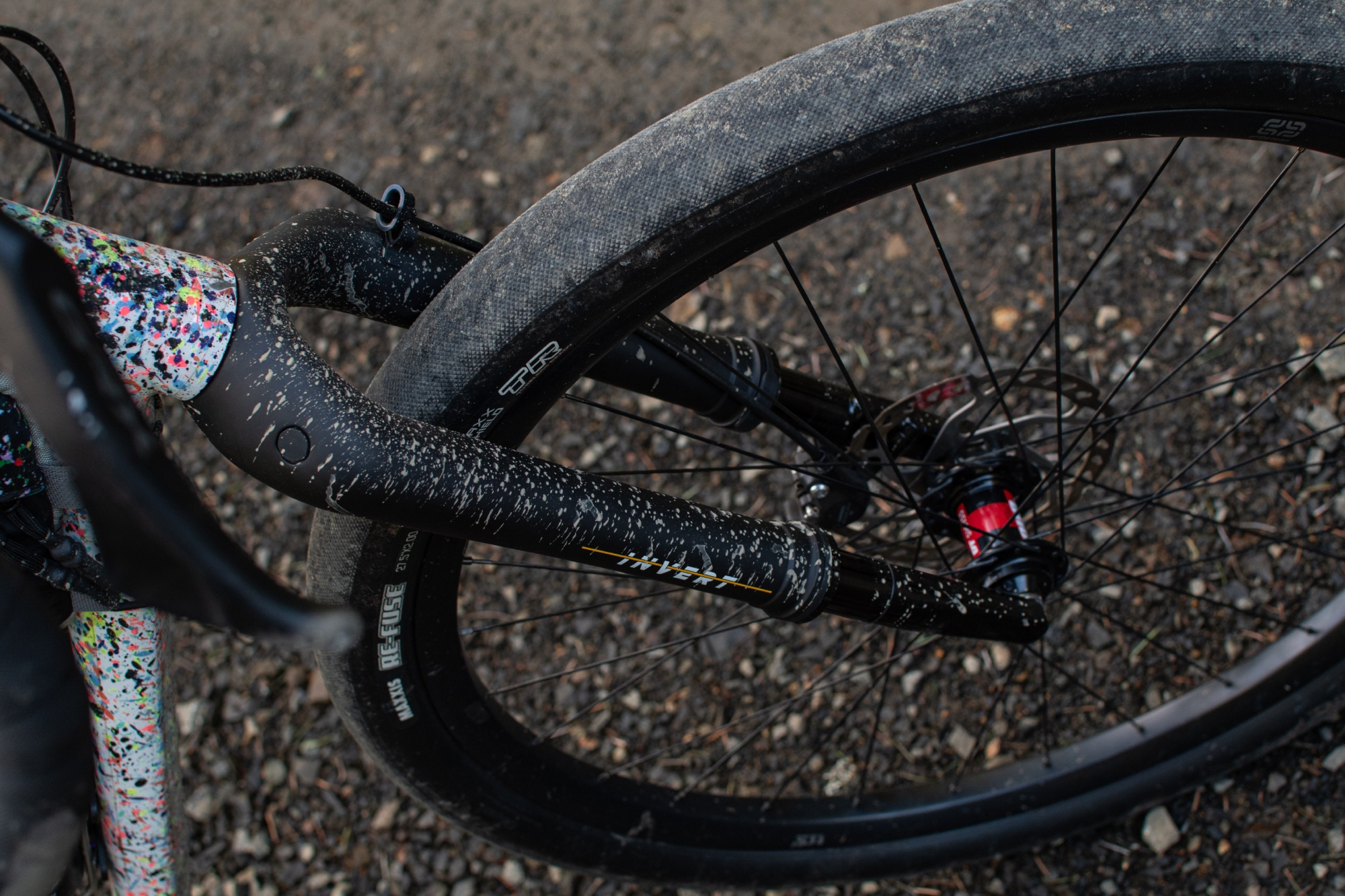
Cable noise: Cane Creek has included some tasteful touches to battle cable rubbing issues. There is a built-in rubber pad where the hose meets the left fork blade. This will help keep the noise down and prevent any rubbing. When things get really rough, you’ll still hear the hose smacking against the front of the fork leg. I think you could get this down to a minimum if you observe where the hose is hitting most frequently and tape on some foam around the hose at that spot.
Lack of fenders: Another oversight I’d like to mention is the lack of fender options. I live in the Pacific Northwest, where fenders are an essential bit of kit. They usually come out in October and stay on until May. If you’re a fairweather rider, this won’t be an issue, but I love riding in all conditions, so this is a bit of a dealbreaker for me, especially when the Fox32TC and Rockshox Rudy forks offer mounts for full fenders.
Geometry & Fit:
The ATC measurements on the current crop of suspension gravel forks are all above 420mm, which alters your bike's geometry.
Cane Creek Invert: 30mm = 425mm / 40mm = 435mm
Fox 32 TC: 40mm = 435.5 / 50mm = 445.5mm
Rockshox Rudy: 30mm = 425mm / 40mm = 435mm
MRP Baxter: 40mm = 430mm / 60mm = 456mm
Many gravel bikes are still designed with rigid fork lengths under 400mm (for example, my Nukeproof is designed around a 395mm fork with 48mm offset). Adding the Invert fork makes the difference in the geometry tangible. One could adjust for this by changing the stem and saddle position, but finding the sweet spot takes some playing around.
In the mountain bike world, a 10-20mm ATC change warrants a whole new category of bike. The gravel category will need to start figuring out how to design frames around the longer ATC required for suspension forks. The added length up front affects steering considerably, and the changes to the bottom bracket height and position are also noticeable in power output and ride feel.
While it might not affect your fit, it is good to know up front that it may change the way your bike rides (good or bad!)
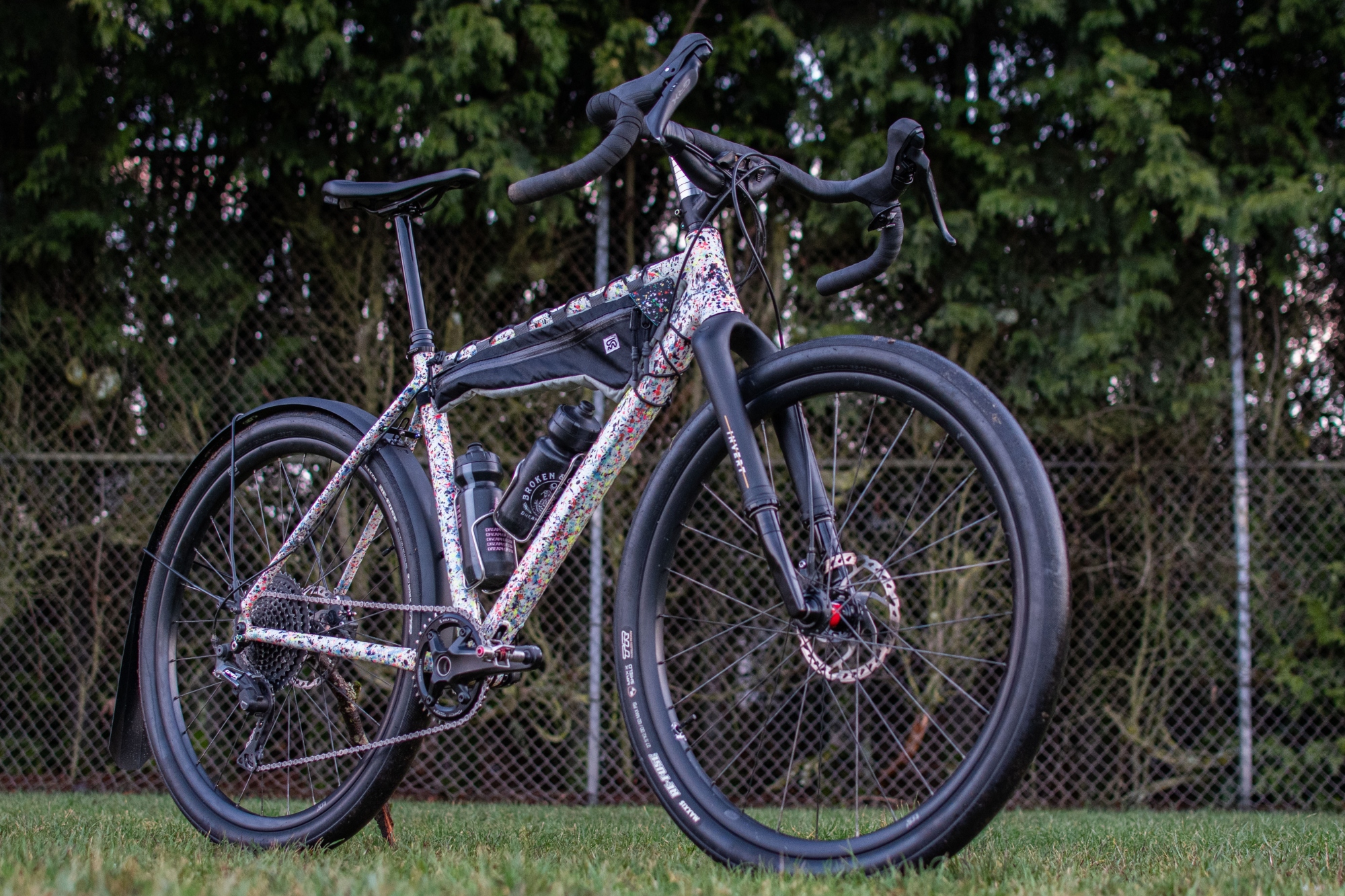
Aggressive riding: While the lack of damper helps keep the weight down, it comes at a cost. If you’ve ever ridden your mountain bike with the rebound fully open and enjoyed the feeling of rapid return, you might love this feeling. But if you’re used to a more composed rebound tune and tamer return, this might take some getting used to. If you’re an aggressive rider who likes to pop off every bump, it will take some getting used to. It’s reminiscent of a high-volume tyre without that scary sidewall folding feeling.
When I set up the airspring based on the guide, it felt a bit too easy to bottom out. The setup chart calls for 176 psi for my 185 lb weight, but I ended up settling on 201 psi to keep it from bottoming out too easily.
Riding the Invert
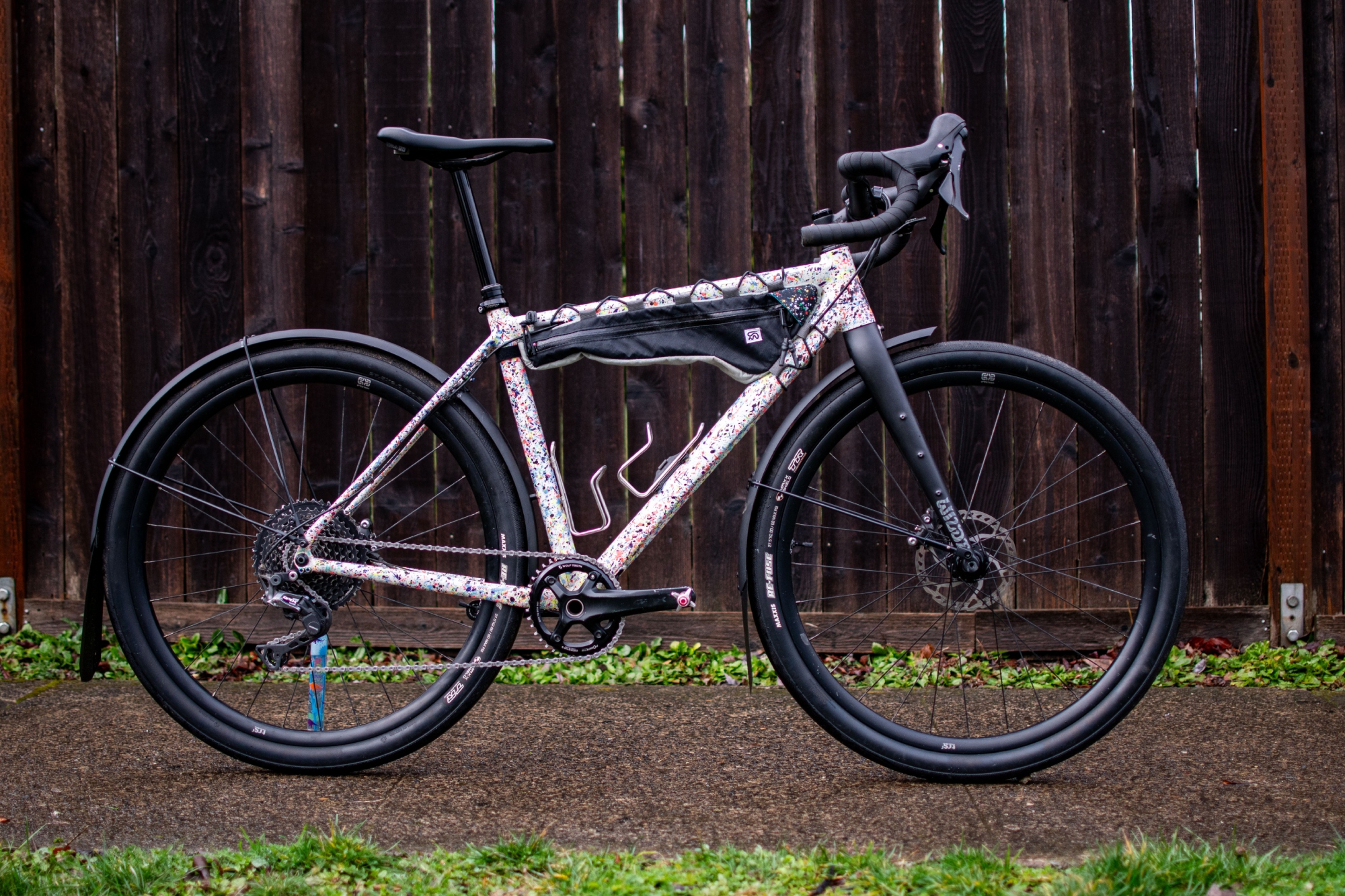
Despite its limitations, the Invert does a great job of making gravel riding noticeably more comfortable. It also makes riding on city streets, smooth pathways and cement trails more enjoyable. But push it beyond that, and you’ll quickly find its limits—which is expected given the 30mm of travel and lack of damping.
The Cane Creek Invert as a gravel fork
Cane Creek was right in calling this a purebred gravel fork. It shines when putting in long miles over mixed surfaces. It really works, and I am a little bummed I didn’t get to try out the climb switch, as I bet that really elevates the experience when getting out of the saddle. Still, I never felt like I was wasting energy to the fork's movements.
The fork really comes into its own when carrying a good pace over flats, and when descending. It erases most of the hard impacts you get when an unsuspected bump sneaks up on you.

As a all terrain fork
If you’re looking to push this much further past champagne gravel roads, you may run into some limitations. If you’re a rider who likes to push your bike into compressions and pop off trail obstacles, you’ll need to get used to the unique sensation of the undamped air spring. The best way I can describe it is like adding a second, low-pressure tyre to your setup—but without the squirmy sidewall fold you typically get when running lower pressures. This design lets you run your actual tyres at slightly higher pressures, which improves rolling speed and eliminates that awkward compressing-sidewall feeling. The result is a front end that tracks with surprising confidence, all things considered.
My biggest gripe is with how the rebound feels without dampening. It is fast and that pogostick feel makes things a bit sketchy when you’re navigating rougher terrain or pushing the bike over wet rocks or roots. This winter and spring has been real wet in the Pacific Northwest, which has led to all sorts of unfavourable conditions and great opportunities to push the fork out of its comfort zone.
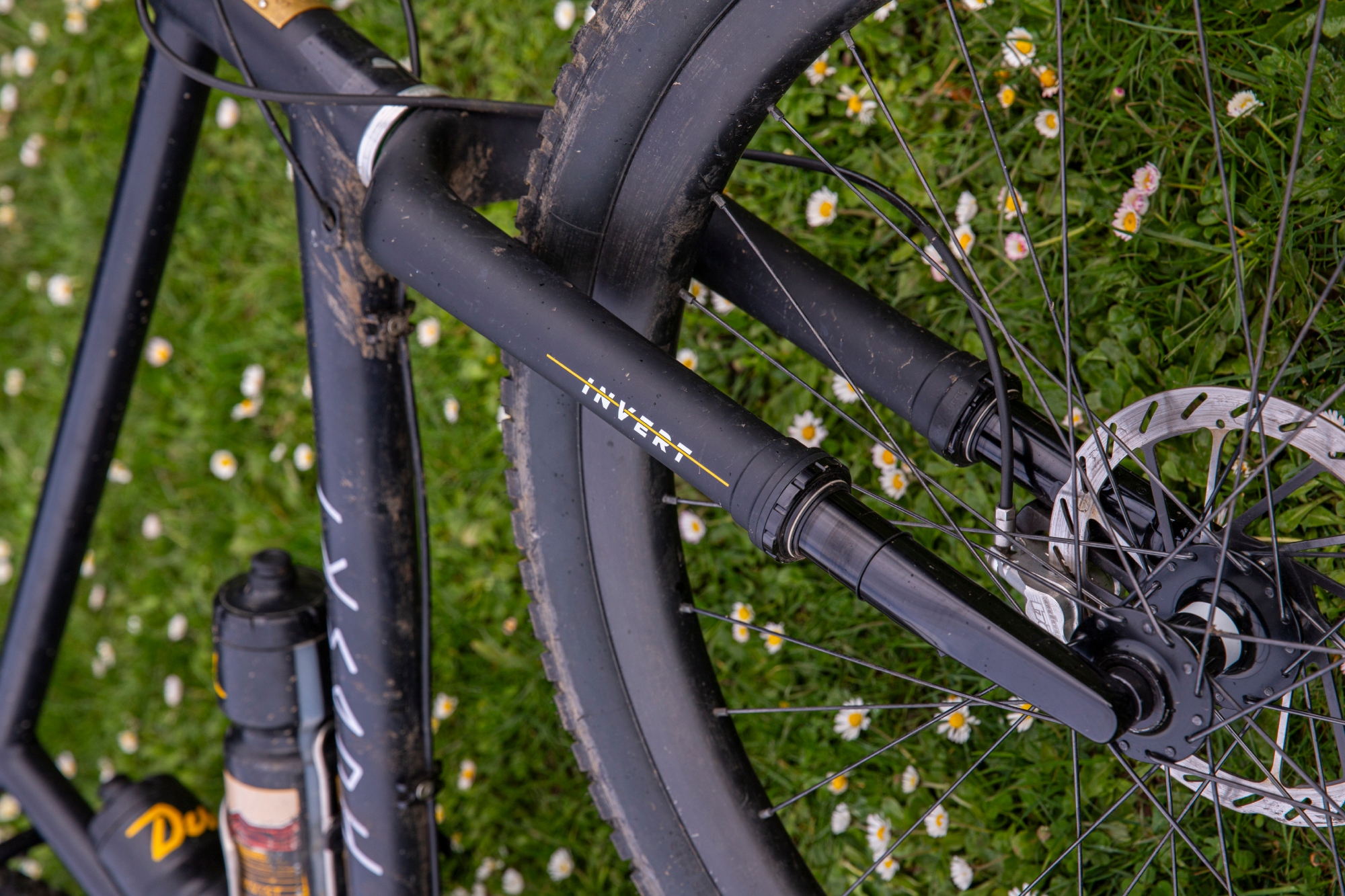
To really put the fork through its paces, I mounted it on my Hudski Doggler and squeezed in a pair of Ultradynamico Mars 27x2.25 Robustos. Their tread strikes a nice balance between gravel and XC, giving you the confidence to get into all kinds of shenanigans. The slightly rounder profile also helps with clearance in tighter spots.
With high-volume tyres and more aggressive riding in mind, dialling in air pressure became crucial. I settled on 23 PSI in the tyres and 195 PSI in the fork. It still bottomed out more than I’d like, but it felt supportive and predictable enough to live with.
I wasn’t thrilled with how the fork handled big compressions or jumps with steep lips—the fast rebound became more noticeable, especially on the longer Doggler chassis. Still, I had a blast testing its limits on a flat-bar hybrid, even if I wouldn’t recommend this setup for everyday use.
To Cane Creek’s credit, Will warned me this wasn’t the intended use case. Which, honestly, just strengthens their claim that this is the first true gravel fork.
Verdict
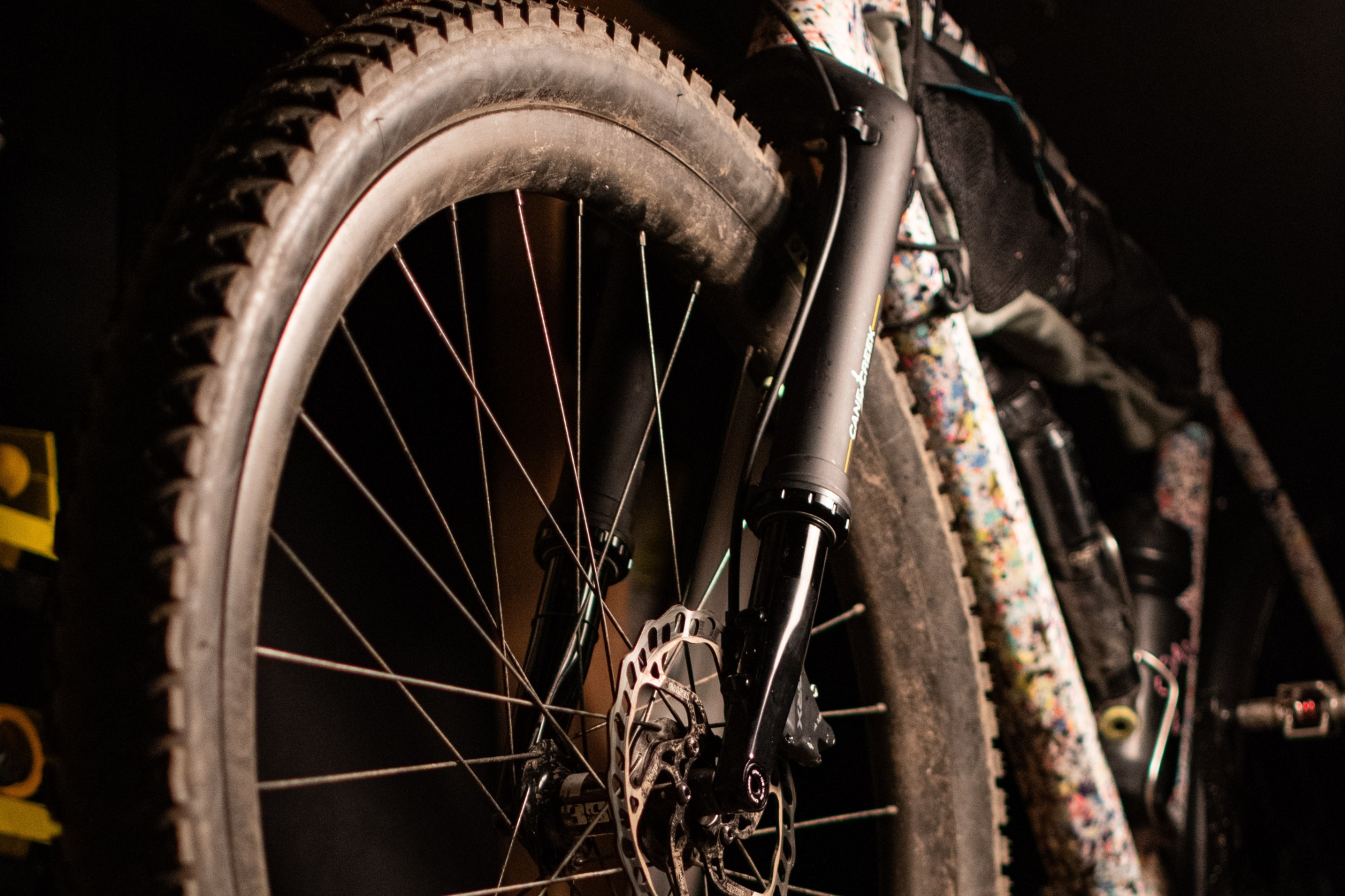
Where this fork shines
Road miles: Erases all the occasional bumps.
Gravel: High-frequency chatter is no match for the 30mm of travel.
Commuting: It makes little road imperfections disappear.
Smooth dirt: Enough suspension to push harder.
Where this fork lacks
Rougher Singletrack: Undamped rebound can be a bit unpredictable.
Wet Conditions: Lack of fender mounts means you’ll be coming home with a face full of road spray and mud.
Aggressive Riding: An interesting mix between the thwack of bottom out and unpredictability of rebound
Who is this bike for?
I think the ideal candidate for the Cane Creek Invert is someone who spends the majority of their miles on gravel roads and is looking for a way to increase comfort and confidence to help them go further and ride longer.
If you’re looking for a fork that could turn your gravel bike into a mini mountain bike, you may want to stick to other offerings (ie, the Fox 32 TC or Rockshox Rudy) that use a more traditional layout with both air spring and dampening.
Verdict:
The Cane Creek Invert is a simple, albeit extravagant, upgrade to your gravel bike that will boost comfort and confidence on your gravel rides. The title of gravel fork is well-earned, but things can get unpredictable when the fork is pushed outside the realm of the current gravel trend. In typical Cane Creek fashion, the design and finish on the fork are beautiful.
Value
The Invert comes in at a whopping $1,199.99 retail. If your goal is to open up more terrain possibilities, you might be better off getting a cheap hardtail. If your goal is to get a good-looking piece of kit that will make your gravel rides more enjoyable, then this might be the ticket.
However, at this price and the fork's simplicity, I would like to see more than a two-year warranty.
To sweeten the deal, though, Cane Creek is currently offering a $250 credit if you send in your current fork in exchange for the Invert.

Thank you for reading 20 articles this month* Join now for unlimited access
Enjoy your first month for just £1 / $1 / €1
*Read 5 free articles per month without a subscription

Join now for unlimited access
Try first month for just £1 / $1 / €1
Get The Leadout Newsletter
The latest race content, interviews, features, reviews and expert buying guides, direct to your inbox!

Hi! I'm Charlie. I grew up in the Pacific Northwest riding a 20" BMX bike around the neighborhood, building jumps, smashing through ditches and causing chaos. Nowadays I find myself searching for that same feeling but on a larger scale. The neighborhood got bigger, and the rides got longer. But the goals have remained the same: explore new pathways, connect with nature, get airborne and have fun. When I am not riding, I am generally tinkering with my bikes. Always trying to find a new way to maximize fun, style, and efficiency.
You must confirm your public display name before commenting
Please logout and then login again, you will then be prompted to enter your display name.
-
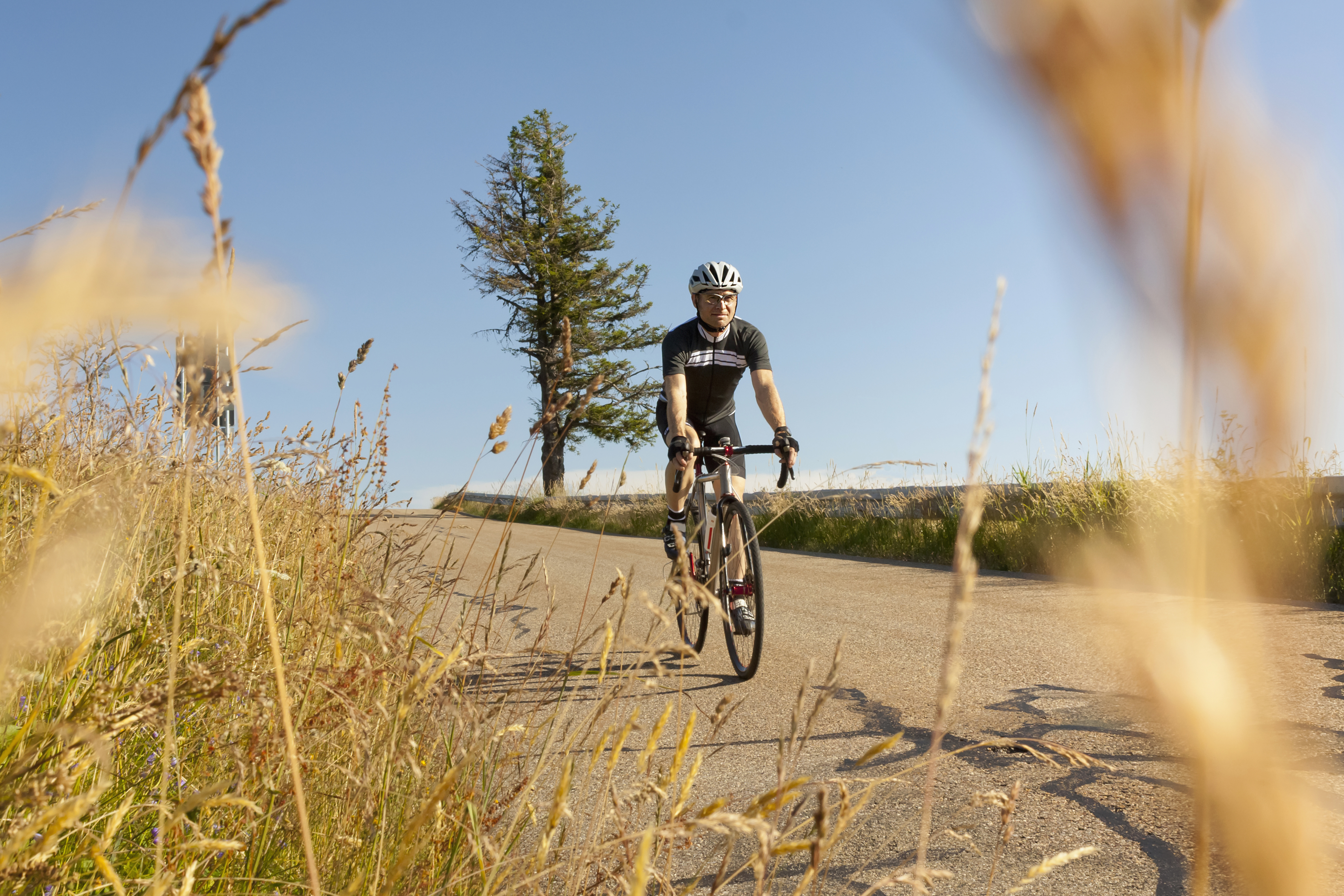 Hayfever and your riding: how to combat it as the pollen strikes
Hayfever and your riding: how to combat it as the pollen strikesExplanations, medications and holistic measures to make your spring and summer riding more enjoyable
By James Shrubsall Published
-
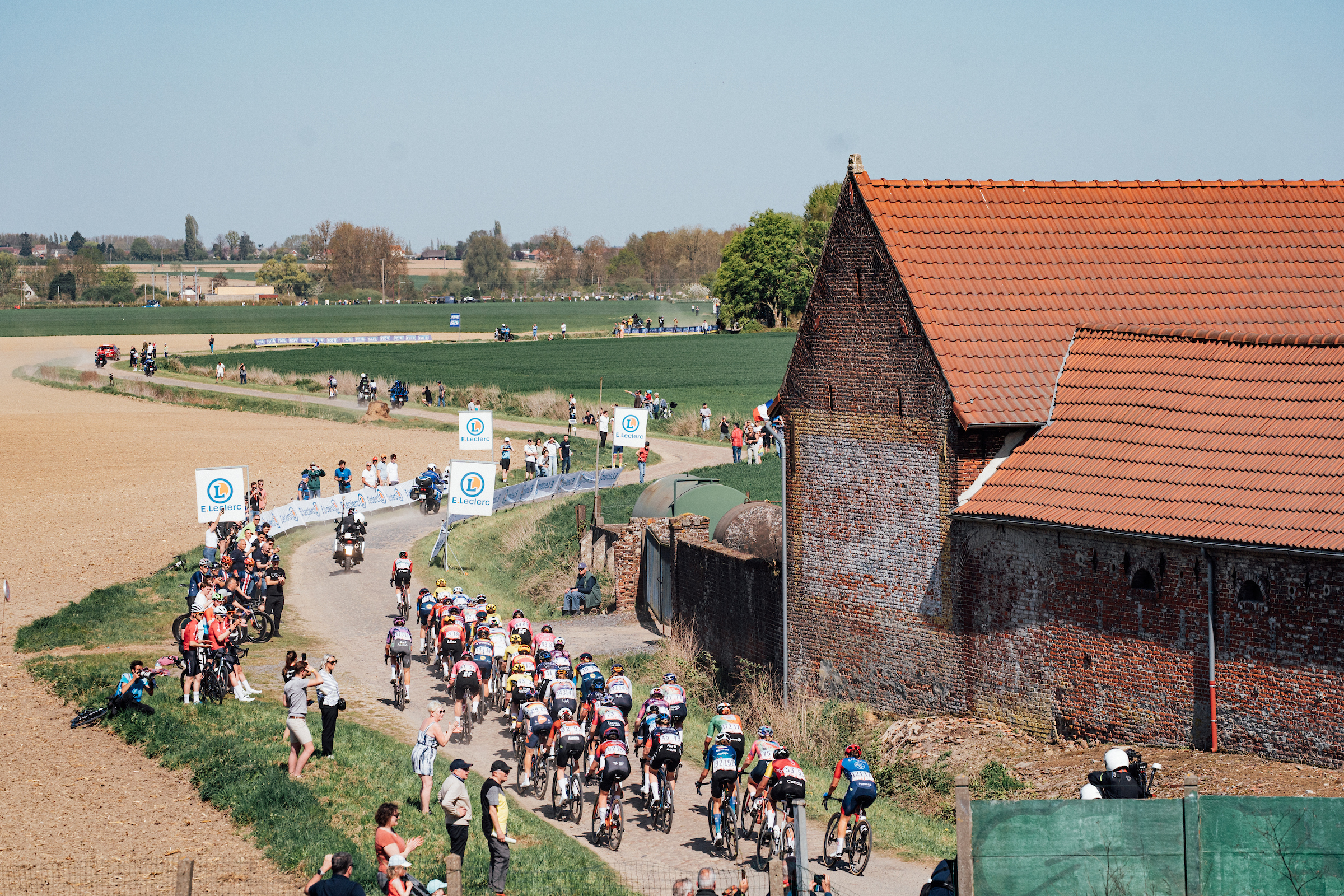 I went to Paris-Roubaix Femmes and was shocked at how it is still treated as secondary to the men’s race
I went to Paris-Roubaix Femmes and was shocked at how it is still treated as secondary to the men’s raceThe women’s version of the Hell of the North is five years old, but needs to be put more on equal footing with the men
By Adam Becket Published
-
 Broken hips, hands, and collarbones: Paris-Roubaix's lengthy injury list lays bare brutality of race
Broken hips, hands, and collarbones: Paris-Roubaix's lengthy injury list lays bare brutality of race"It probably wasn't the best idea to continue," says one of weekend's many wounded riders
By Tom Davidson Published